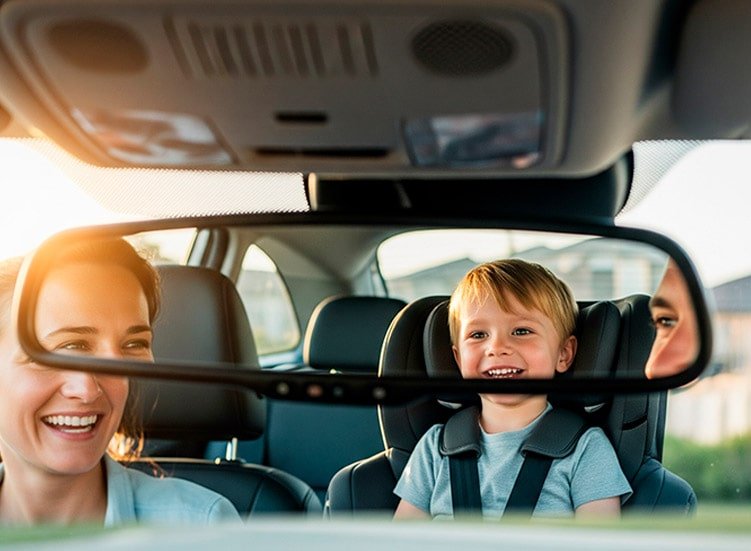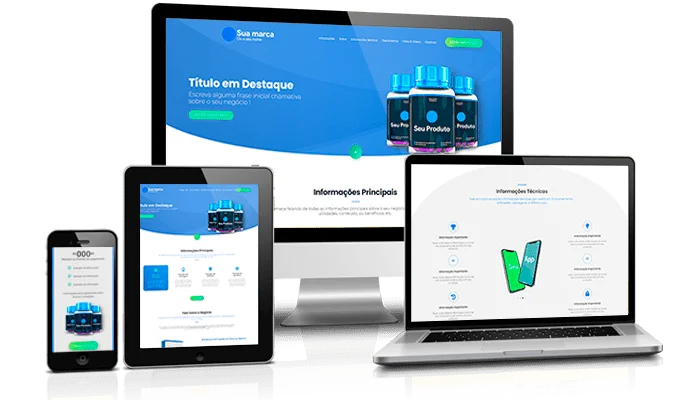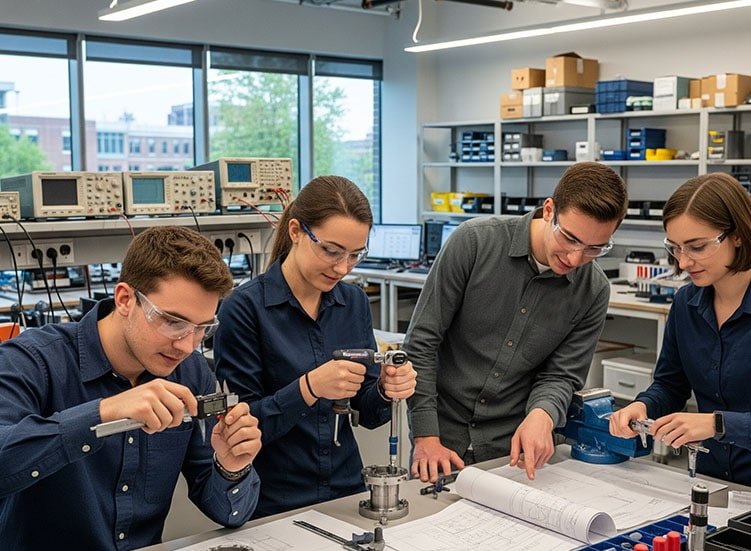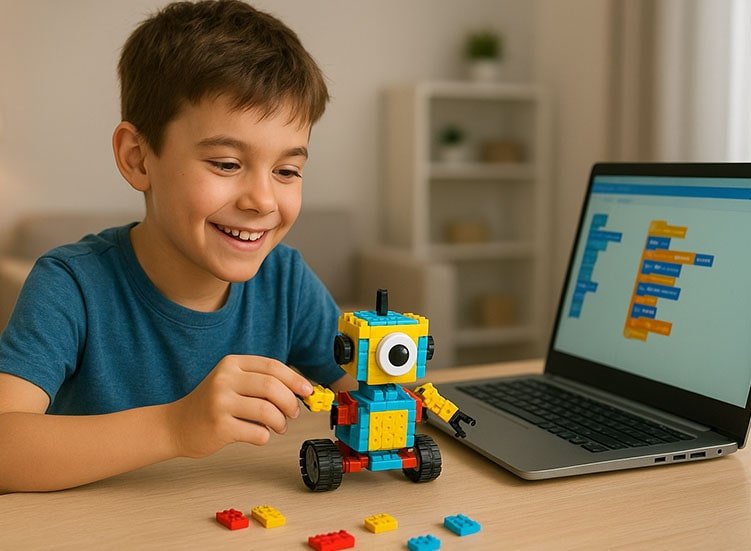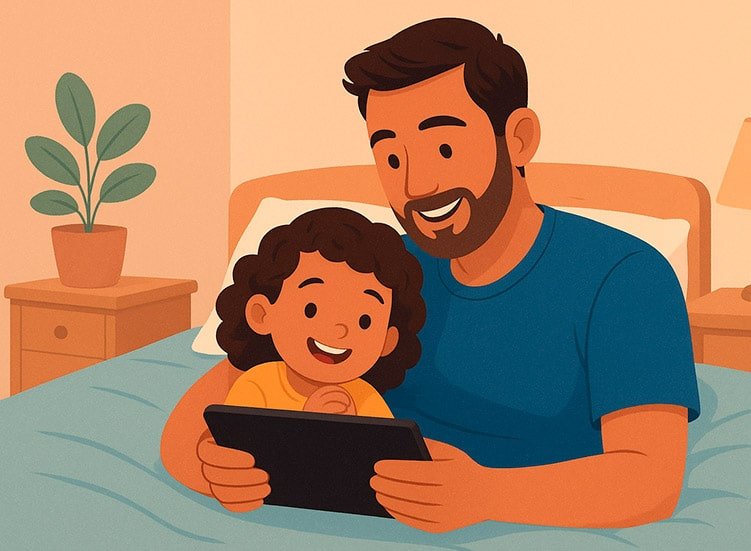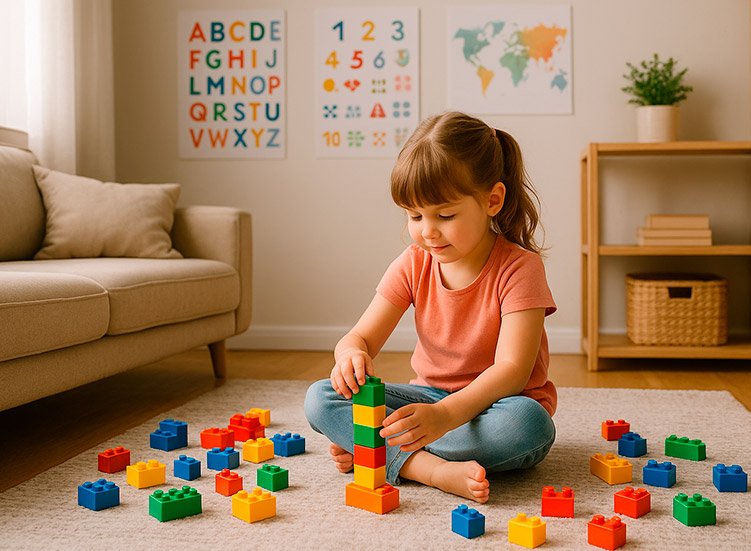Have you ever stopped to think that the back seat of the car is much more than just a safe place for your child?
For many children, this space works as a micro educational environment, where every word, gesture, and attitude from parents is observed and absorbed. What may seem like a short trip to the grocery store, school, or a family outing can turn into a daily learning classroom that directly influences child development.
Child development is not limited to classes or textbooks; it happens all the time, especially when children observe the main role models of behavior in their lives: you and your partner.
Every reaction to traffic, every conversation or game in the car shapes values, patience, empathy, and decision-making. In this article, we will explore how to maximize these educational opportunities, turn everyday conversations into learning, and strengthen your bond with your child.
The back seat as a laboratory for child development
The back seat is a closed, safe, and focused space, ideal for observing and learning. Unlike other contexts, in this environment the child is attentive and with fewer external distractions, making every word and gesture from parents highly impactful.
Why is this space so important?
- Constant observation: the child picks up details such as tone of voice, facial expressions, gestures, and decisions made by parents.
- Learning by example: children learn much more from what they see than from what they are told.
- Moments of reflection: both short and long trips can become opportunities for emotional and social learning.
- Safety and focus: in a secure environment, the child can process and absorb information more effectively.
- They are attentive and free from external distractions.
- They observe gestures, expressions, and attitudes of their parents.
- They learn through example and not only verbal instruction.
- They can reflect on everyday situations in a practical way.
Every ride is a chance to teach patience, respect, empathy, and responsibility — values that will remain present throughout a child’s development.
What happens in the car shapes their perception of the world, turning each trip into a meaningful learning opportunity.
How parents shape child development through attitudes and words
Children are constantly observing their parents, even without directly interacting. In the back seat, they notice:
- Tone of voice: calmness or impatience directly influences the child’s emotional regulation.
- Choice of words: positive or negative expressions shape the child’s worldview.
- Gestures and attitudes: the way parents deal with other drivers, unexpected events, or small problems teaches ethics and responsibility.
- Decision-making: even simple choices, such as letting another car pass or planning the arrival to a destination, are opportunities to develop critical thinking.
Small actions, such as patiently waiting in traffic or explaining another driver’s mistake, can have a lasting impact on child development, as they model behavior and values.
Educational dialogues in the car that strengthen child development
Turning rides into educational moments doesn’t require major changes: it just takes attention, intention, and creativity. Here are examples of dialogues parents can use in different traffic situations:
Situation 1: traffic jam
- Parent: “We’re stuck for a few minutes, let’s take a deep breath together. How do you think we can stay calm?”
- Lesson: patience, self-control, and the awareness that not everything depends on us.
Situation 2: aggressive driver
- Parent: “That driver seems to be in a hurry. Let’s give them space and stay calm. How do you think they would feel if they were in our place?”
- Lesson: empathy, respect, and safety in traffic.
Situation 3: child’s curiosity
- Child: “Why is that car going so fast?”
- Parent: “Some drivers forget the safety rules. Whenever you’re driving, remember to take care of yourself and others.”
- Lesson: responsibility and awareness of social rules.
Situation 4: pedestrians or animals on the street
- Parent: “Look at that pedestrian. We should always give space and pay attention.”
- Lesson: empathy, care for others, and risk perception.
Situation 5: planning the arrival
- Parent: “Let’s choose the best place to park and arrive without rushing. How would you solve this problem?”
- Lesson: organization, planning, and strategic decision-making.
Practical tactics to enhance child development during trips
Beyond dialogues, some practical strategies can make every ride educational:
- Guided observation: ask your child to describe what they see: car colors, bicycles, pedestrians, signs.
- Stories from real situations: turn traffic events into stories with right and wrong choices, teaching ethics and empathy.
- Post-trip reflection: set aside a few minutes at the end of the ride to talk about what they learned.
- Value and attention games: share examples of kindness, patience, and respect observed on the road.
- Use of metaphors and comparisons: turn traffic situations into lessons about life, cooperation, and responsibility.
- Positive reinforcement: highlight correct attitudes, both from your child and from other drivers observed.
Concrete benefits of the back seat for child development
The positive impact of these practices is broad and profound:
- Strengthening family bonds: dialogue and attention reinforce emotional security and trust.
- Stimulation of perception and critical thinking: observing and analyzing real situations supports reasoning and decision-making.
- Learning values and ethics: patience, empathy, responsibility, and respect are internalized.
- Preparation for real-life situations: facing challenges consciously and safely from an early age.
- Development of social skills: interpreting behaviors, communication, and conflict resolution.
How to use the back seat as a moment of spontaneous learning for child development
The back seat is a space of the child’s full attention, perfect for questions and meaningful dialogues.
1. Avoid generic questions
Questions like “how was your day?” generate short and superficial answers (“it was fine”). To stimulate reflection, prefer specific questions:
- “Did something make you laugh today?”
- “What made you sad or upset?”
- “Did you learn something that sparked curiosity?”
- “If you could change something about the day, what would it be?”
These questions produce short but meaningful answers, ideal for educational conversations.
2. Turn everyday events into lessons
Use external traffic situations as opportunities:
- Patience: “Did you see we had to wait at the traffic light? Why is waiting important?”
- Empathy: “That pedestrian had to cross quickly. What would you do to help them?”
- Responsibility: “The driver made a wrong choice. What would you have done differently?”
3. Embrace the silences
Silence is also educational. Children process better when they are not pressured to respond immediately. Give a few seconds for reflection before encouraging them to speak.
4. Daily educational routine
Create small routines for each trip:
- Questions about the feelings of the day.
- Observations about what they saw during the trip.
- Small perception games (car colors, signs, traffic lights).
- Reflection on observed values and attitudes.
⚠️ ATTENTION:
Unnoticed actions that influence child development
In the back seat, it is not always what you say directly to the child that teaches; often, it is the attitudes and indirect conversations that leave lasting marks:
1. Phone conversations or with the passenger
- Negative example: constantly talking about work stress, complaining about colleagues or clients.
- Impact: the child may internalize anxiety, excessive worry, or a negative view of social relationships.
- Positive example: discussing solutions, planning the day in an organized way, or talking about small achievements.
- Benefit: teaches problem-solving, positive thinking, and emotional management.
2. Parallel conversations between parents
- If parents argue, even if not directly with the child, the child perceives tension, tone of voice, and body language.
- Strategy: keep work or personal conversations in a neutral tone, or turn them into examples of conflict resolution. Or even avoid these conversations and leave them for later, when the child is not present.
3. Music and audio content
- Music choice: Pay attention to the lyrics of the songs; if they are appropriate for the child’s age, prefer calm, educational, or motivational music that can influence mood, concentration, and creativity.
- Audiobooks or short podcasts: can introduce stories, curiosities, or values naturally.
- Avoid aggressive content or that causes anxiety: heavy news or violent songs can generate tension and fear.
4. Gestures and body expressions
- Impatient movements, sighs, tapping hands on the wheel, or irritated looks at other drivers are interpreted and internalized by the child.
- Practical tip: using positive gestures, expressions of calm and patience, even in stressful situations, teaches emotional self-regulation.
5. Attitude towards the unexpected
- Example: slow traffic, rain, or road works.
- Negative: complaining or blaming others.
- Positive: explaining the situation calmly, showing solutions or alternatives.
- Benefit: teaches resilience, patience, and critical thinking.
The back seat thus becomes a micro environment of behavioral modeling, where the child learns not only from what you say, but from what you do, observe, and transmit indirectly.
❓ (FAQ) Frequently asked questions about how parents’ words and actions influence child development
Often, because of the time spent on the road, the child is almost “forced” to observe parents’ words, gestures, and attitudes, absorbing values, social behavior, and decision-making skills.
Patience, empathy, responsibility, respect for rules, and observation skills.
Ask questions about feelings, observations from the ride, play attention games, and encourage small reflections after the trip.
Avoid bursts of impatience, negative criticism, and impulsive reactions.
Use every event as an opportunity to teach values, ethics, and problem-solving.
Specific questions about emotions, curiosity, and everyday situations generate short yet thoughtful answers.
Conclusion on How Parents’ Words and Actions Influence Child Development
The back seat of the car is much more than a safe physical space to transport children: it is a true laboratory of learning and connection. Every word, gesture, attitude, and even seemingly secondary conversations—such as work calls, chats with fellow passengers, or the music playing—are observed and absorbed by children, shaping their values, social behavior, emotional regulation, and critical thinking.
Instead of seeing these rides only as commutes, parents can turn them into valuable educational moments, using guiding questions, shared observations, attention games, and reflections on everyday situations. Small actions, such as staying calm in traffic, choosing inspiring music, or showing empathy in the face of setbacks, can have lasting effects on child development.
With attention, creativity, and intention, every trip becomes an opportunity to teach values, spark curiosity, strengthen bonds, and prepare children for real-life challenges. The back seat, such a common micro-environment, can become one of the richest spaces for your child’s emotional, social, and cognitive growth.
💡 Final Tip:
Start viewing every ride with fresh eyes. Transform traffic situations into lessons and value these moments as small but powerful opportunities for growth.
After all, even this “back seat phase” will eventually pass…
Did you enjoy this content? Share it with other parents and turn every car ride into a true space for learning and connection!
Click here for more content on Parenting & Education.

